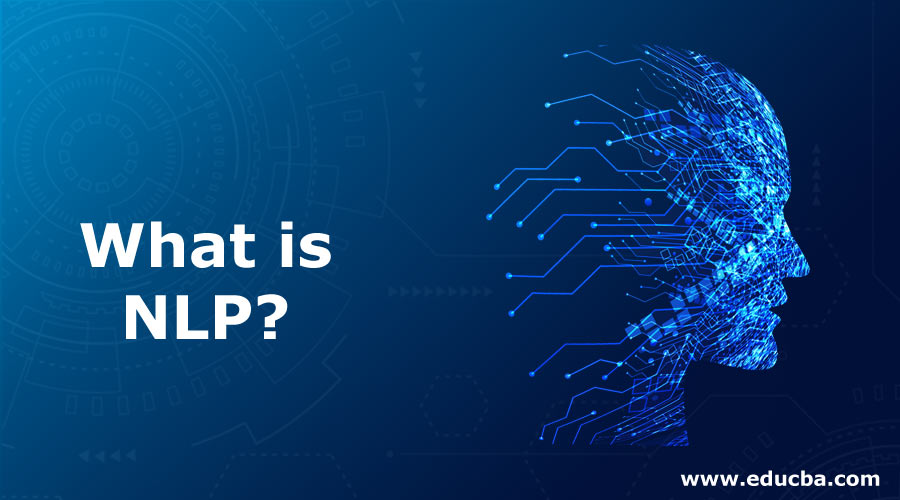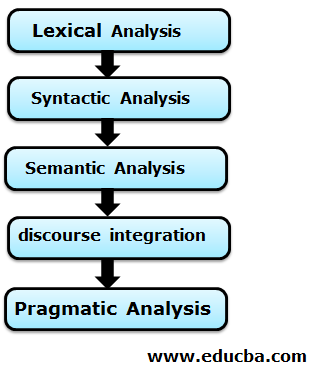
Introduction to NLP
NLP stands for Natural Language Processing. It is a subfield or branch of Artificial intelligence (AI) that enables computers to understand human languages and process them in a helpful manner. It concerns the interactions between human-spoken (natural) languages like English and computers.
What is NLP?
Natural Language Processing helps computers to observe, analyze, understand, and derive valuable meaning from natural or human-spoken languages. Tasks like translation, automatic summarization, relationship extraction, speech recognition, named entity recognition, topic segmentation, and sentiment analysis can be performed by developers using Natural language processing (NLP).
However, NLP applications are complex or challenging as computers require humans to interact with them using programming languages like Java, Python, etc., which are structured and unambiguous. But human-spoken languages are ambiguous and change with regional or social change; hence it becomes difficult to train computers to understand natural languages.
Understanding NLP
There are many difficulties faced in natural language processing; hence it is characterized as complex in computer science. One major problem that NLP faces is that many words have multiple meanings. These can be distinguished easily by humans but are difficult for computers. For example, ‘board’ can mean a chopping board, blackboard, or board of directors. The difference is understood by the sentence preceding it or words that surrounds ‘board’.
- He is the head of the board.
- She solved the problem on the board.
Humans would understand easily that ‘board’ in the first sentence refers to the board of directors, and in the second one, it refers to a blackboard, but it is not the case with computers.
Despite these difficulties, computers are enhancing their ability to understand human languages. Knowledge of various linguistic fields helps to speed up this process:
- Morphology is the study of the formation of words from basic or primitive units.
- Morpheme refers to a basic unit of meaning in a language.
- Phonology is the study of systems of sounds.
- Syntax refers to how words and phrases are arranged to form a sentence.
- Semantics refers to the meaning of the words and the sentences.
- Pragmatics refers to understanding, interpreting, and using sentences in different situations.
- Discourse refers to how the preceding sentence affects the meaning or interpretation of the next sentence.
- World Knowledge refers to general knowledge about the world.
Working with NLP
We can break down the process of Natural Language Processing into three steps:
- First, speech–to–text process
- Part-of-speech tagging
- Text-to-speech conversion
Let us see each step one by one:
1. Speech-to-text process
It refers to reading the written text in human or natural language. It is a process of analyzing and understanding the natural language received by the computer as input. The computer uses various algorithms or built-in statistical models that perform speech recognition, which helps convert the received natural language into a programming language. Performing lexical analysis involves dividing the received data into smaller sentences or words.
2. Part-of-speech tagging or word category disambiguation
In this process, grammatical forms such as nouns, adjectives, verbs, tenses, etc., are identified using Lexicon rules called syntactic analysis. It also draws the exact or dictionary meaning of the text, called semantic analysis. Finally, it also performs discourse Integration which interprets the meaning of a sentence according to the preceding sentence.
3. Text-to-speech conversion
In the text-to-speech conversion step, the text in a programming language is converted into a textual or audible format valuable to the user.
Advantages of NLP
Given below are the advantages of NLP:
- Automatic summarization
- Coreference resolution
- Discourse Analysis
- Relieves the burden of syntax learning
- No training required
- Allows non-programmers to interact with computing systems
- You can interpret common synonyms of input.
- Better and more efficient results
- Search processing tells what users exactly mean
- More data mining means more data for growth
- Can perform complex search
- Contextual understanding
Required Skills
Given below are the required skills:
- Programming skills
- Knowledge about machine learning
- Common NLP problems
- NLP tools
- Ability to understand research papers
- Building prototypes
- Capability to learn new stuff
- Software engineering skills
- Probability and statistics
- Linguistic knowledge
- Recursive neural networking
Why do we Use NLP?
- For machine translation
- For automatic summarization
- For sentiment analysis
- For text classification
- For question answering
- For language modeling
- For speech recognition
- For caption generation
- For named entity recognition (NER)
- For Part- Of- Speech tagging
- For semantic parsing
- For paraphrase detection
- For character recognition
- For spell checking
- For chatbots
- For customer service
- For market intelligence
How will this Technology help you in Career Growth?
The growing applications and interest in natural language processing have created various opportunities for professionals specializing in Machine Learning, Computational Linguistics, and Data Science. Big companies like Google, Facebook, Forte Group, Sony Ericsson, Merrill Lynch, British Airways, Sainsbury, J.P. Morgan, Celtic, American Express, Ernst & Young, and many more hire natural language processing analysts and experts.
NLP scientists, NLP engineers, NLP architects, NLP applied research scientists, cognitive data scientists, voice artists, and many others are involved in various job roles related to Natural Language Processing. The average salary for jobs related to natural language processing ranges from $76,343 per year to $142,912 per year.
Conclusion
If you are interested in interacting with computing systems and have programming and linguistic knowledge, learning natural language processing holds great value. Moreover, due to increased data and the need to interact with computers, natural language processing is increasing daily, and various job opportunities are coming into the market with handsome packages. Therefore there is a great scope for NLP in the future.
Recommended Articles
This has been a guide to What is NLP? Here we discussed the basic concept, use, skills, career growth, and advantages of NLP. You can also go through our other suggested articles to learn more –

